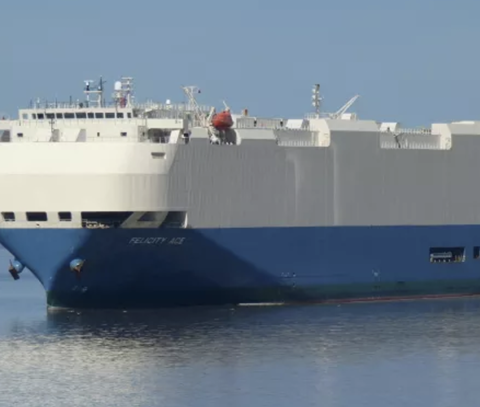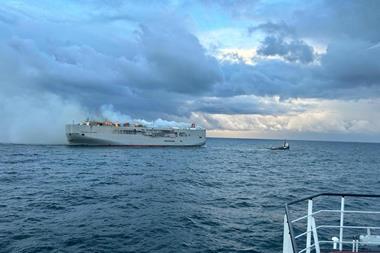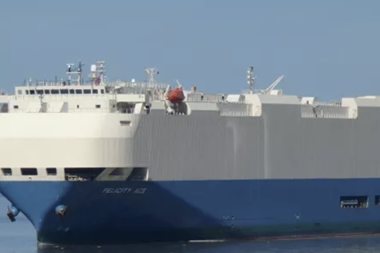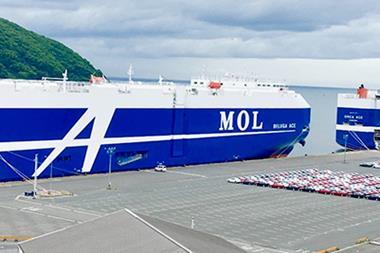A salvage team boarded the stricken Mitsui OSK Lines (MOL) car carrier Felicity Ace at the end of last week to assess the damage caused by the fire that started in its cargo decks on February 16 and spread throughout the vessel.

There is no more smoke coming from the vessel and no oil leaking from it, according to MOL Ship Management.
The car carrier was in transit across the Atlantic just south of the Azores when the fire broke out. It was en route to the US east coast port of Davisville, having departed the German port of Emden with what is thought to be around 4,000 vehicles on board. The vehicles were all VW Group brands, including VW, Audi, Bentley, Lamborghini and Porsche. Emden port exclusively handles VW Group vehicles.
The Felicity Ace is now being towed by a salvage craft to a safe zone near the islands. Another salvage vessel with firefighting equipment and two tugs are accompanying the vessel.
“We fear that the fire on the ship has damaged a large number of the nearly 4,000 Group-brand vehicles to such an extent that they can no longer be delivered to customers,” said a spokesperson for VW Group, adding that the company was waiting for more detailed information on the condition of the cargo.
The carmaker said it was relieved by reports that the crew was rescued safely and without harm. VW Group also said brands and dealers had begun informing customers awaiting vehicles that were on board and were working to solve the issue. The carmaker also said that damage to the vehicles was covered by insurance.
The loss of the vehicles onboard the vessel is estimated to be around $334.6m, according to valuation consultancy Anderson Economic Group.
“The lost Porsche vehicles alone, which we assume are 1,100 vehicles including many customized high-end models, would exceed $140m. We further anticipate salvage costs in excess of $150m, said the consultancy in a statement.
Electric vehicles
Among the units being moved were a significant number of electric vehicles (EVs). Anderson Economic Group said the incident underscored the safety risks associated with the large lithium-ion batteries powering EVs and the unusual fire risks associated with them.
“The Felicity Ace, built in 2005, undoubtedly carried fire suppression equipment in the cargo hold,” said the consultancy. “Nonetheless, reports from the scene indicate that smoke from the burning vehicles overwhelmed the crew’s ability to suppress the fire, resulting in the ship’s rapid abandonment.”
Any damage to an EV battery can cause a short circuit that can cause thermal runaway in which the temperature rises rapidly within a fraction of a second and the energy stored in the battery is suddenly released, causing a fire that is almost impossible to extinguish by conventional means.
As previously reported, there have been a number of ro-ro vessel fires in recent years, and MOL’s vessel Sincerity Ace was engulfed in flames while crossing the Pacific with a large consignment of Nissan vehicles back in 2019
While it remains uncertain whether an EV battery was the cause of the fire, Anderson Economic Group said the situation demonstrated a need to make potentially expensive safety investments to handle a future of extensive EV deliveries.







































No comments yet